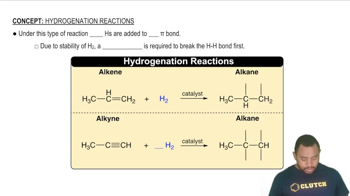Here are the essential concepts you must grasp in order to answer the question correctly.
Intermolecular Forces
Intermolecular forces are the forces of attraction or repulsion between neighboring particles (atoms, molecules, or ions). They are weaker than covalent or ionic bonds and include hydrogen bonding, dipole-dipole interactions, and London dispersion forces. Understanding these forces is crucial for predicting the behavior of substances in different states and their solubility in solvents.
Recommended video:
Intermolecular vs Intramolecular Forces
Hydrogen Bonding
Hydrogen bonding is a specific type of strong dipole-dipole interaction that occurs when hydrogen is covalently bonded to highly electronegative atoms like oxygen, nitrogen, or fluorine. In the case of glucose and water, the hydroxyl (-OH) groups in glucose can form hydrogen bonds with water molecules, significantly influencing its solubility in water.
Recommended video:
Solubility Principles
Solubility refers to the ability of a solute to dissolve in a solvent, which is influenced by the nature of the solute and solvent, as well as temperature and pressure. The principle 'like dissolves like' suggests that polar solutes, such as glucose, are more soluble in polar solvents like water due to favorable interactions, including hydrogen bonding and dipole interactions.
Recommended video:
Uncertainty Principle Formula
 Verified step by step guidance
Verified step by step guidance

